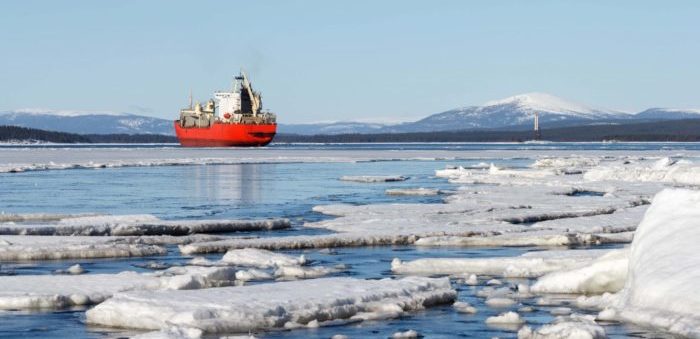The Bureau of Safety and Environmental Enforcement (BSEE), in partnership with the University of Alaska, recently completed a research study that examined the ability of current offshore structural designs to successfully survive sea ice demands under extreme Arctic conditions. This is one of many studies that will be discussed at the Arctic Offshore Regulators Forum in Washington, D.C.
The objective of the study, “Reliability-Based Sea Ice Parameters for Design of Offshore Structures,” was to produce information that would supplement current standards and recommendations such as ISO 19906 Standard: Petroleum and Natural Gas Industries – Arctic Offshore Structures, to provide additional sea ice information for the Chukchi and Beaufort Seas. Established to support regulatory decision making, BSEE’s Technology Assessment Program ensures that industry operations offshore incorporate the best available and safest technologies as required by the Outer Continental Shelf Lands Act and Energy Policy Act.
Over a two-year period, researchers gathered data from 16 seasons of ice measurements from the Chukchi and Beaufort Seas. This data provided sufficient comparisons of various sea ice parameters, such as first and last ice occurrence, level of ice, rubble fields, ridges and ice movement. After a full analysis, the research team was able to analyze a range of annual values to develop averages and draw conclusions.
The study identified critical keel depth and provided an assessment of the suitability of the current ISO 19906 recommendations for estimating global ice forces on offshore structures. The Following the collection of additional data, analysis and thorough review of recorded events, the researchers concluded that it appears the current standard of practice cited in ISO 19906 is conservative for current structural design parameters and is capable of surviving the demands from sea ice.
To support these efforts, BSEE has a dedicated program coordinator in Alaska who assists with identifying research that advances BSEE’s regulatory objectives in the Arctic. There are currently seven studies ongoing that assess offshore engineering technology and conditions operators face in harsh Arctic conditions. All of these efforts assist BSEE in understanding how conditions in the Arctic could impact future regulatory standards.
The sea ice study will be presented when the Bureau hosts representatives from regulatory authorities of six Arctic nations next week in the Main Interior Building in Washington, D.C. as part of a meeting of the Arctic Offshore Regulators Forum (AORF). The AORF, which addresses a specific recommendation of the Arctic Council’s Task Force on Arctic Marine Oil Pollution Prevention, is an Arctic forum of technical and operational offshore petroleum safety regulators whose members are dedicated to the common cause of continually improving offshore safety outcomes. Its primary scope is the exchange of information, best practices and relevant experiences learned from regulatory efforts related to developing petroleum resources in the Arctic.
Source & Image Credit: The Bureau of Safety and Environmental Enforcement




























































